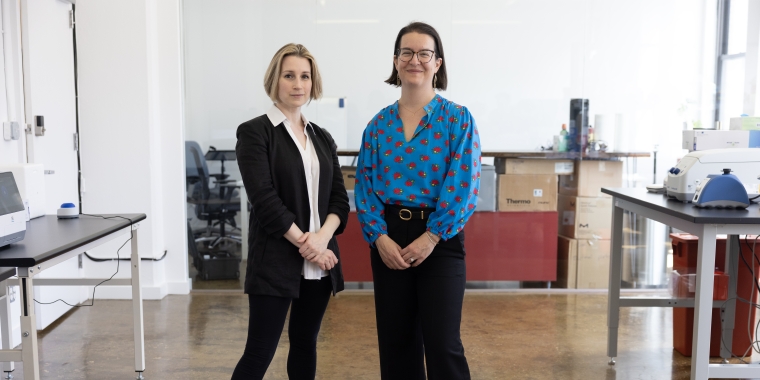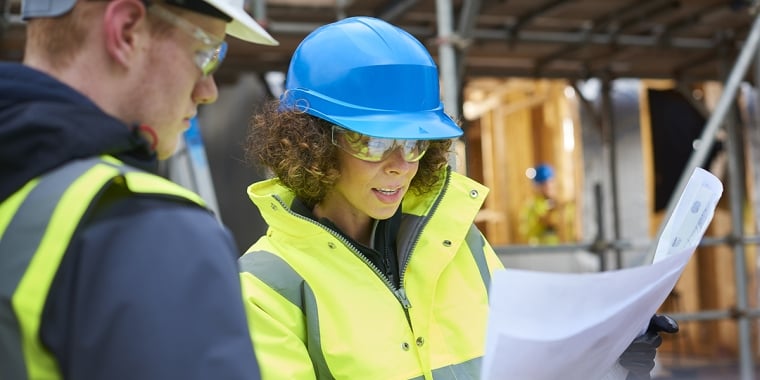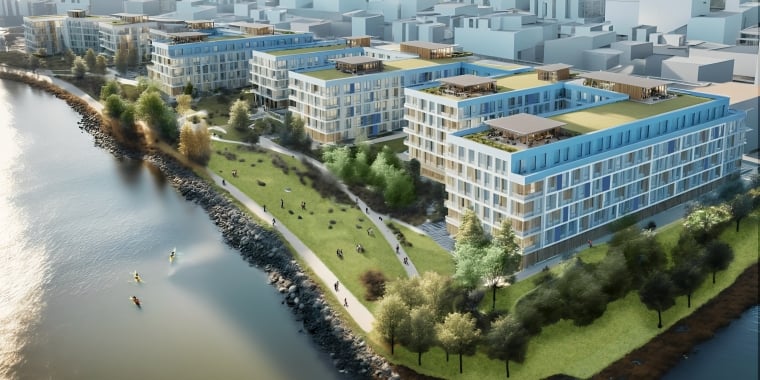Mayor Adams, Governor Hochul Release Details for First-of-its-Kind Job and Education Hub for Growing Health Sector
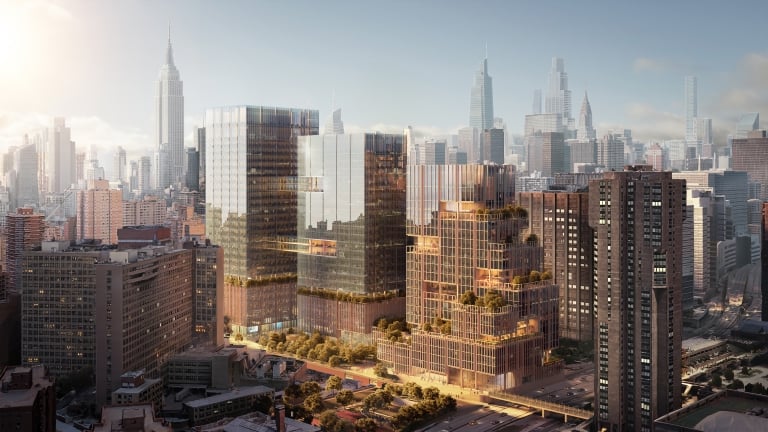
New Master Plan and Design RFP Advance SPARC Kips Bay Project, Future Anchor of NYC Life Sciences Industry
Project Will Create More Than 15,000 Jobs, Generate $42 Billion in Economic Impact
NEW YORK, NY—New York City Mayor Eric Adams, New York Governor Kathy Hochul, the New York City Economic Development Corporation (NYCEDC), and The City University of New York (CUNY) today unveiled the Science Park and Research Campus (SPARC) Kips Bay Master Plan for this first-of-its-kind life sciences career and education hub that will anchor the industry in New York. Arriving just over one year since SPARC Kips Bay was announced, the master plan unveils key project details, including a new site plan and conceptual design, a new model for education and job training pipelines, and updated economic impact projections showing how significantly it will further New York City’s role as a global leader in creating and attracting accessible jobs in life sciences, health care, and public health by creating a pipeline from local public schools to careers in these essential sectors. The project is expected to create more than 15,000 total jobs and generate $42 billion in economic impact.
In addition to the master plan, the Adams administration launched a new community task force led by NYCEDC to shape and steer the project’s vision and released request for proposals (RFP) for design of key public space, community infrastructure, and a pedestrian bridge for the project’s first phase. The major steps for this critical project come as part of Mayor Adams’ “Working People’s Tour,” continuing to create jobs and power New York City’s economic recovery after the city recovered all of the nearly 1 million jobs lost during the COVID-19 pandemic.
“It’s no secret that New York City has the most talented workers, and the SPARC Kips Bay campus will continue this legacy by creating more than 12,000 jobs right here in Manhattan,” said Mayor Adams. “This campus will be a bridge to the next generation, preparing New York City students of today for the jobs of tomorrow in a rapidly growing sector with higher education opportunities through our academic partners at CUNY and internships at every level. This project will help us create a healthier, more prosperous city through true community engagement and public-private partnership.”
“The SPARC Kips Bay Master Plan is New York’s road map to establishing a hub for innovation, job growth, and education in the life sciences right in the heart of Manhattan,” said Governor Hochul. “With a projected 15,000 jobs and $42 billion in economic impact over the next 30 years, SPARC Kips Bay will help to build on statewide efforts like New York’s transformative Life Science Initiative to grow 21st-century businesses and jobs and ensure that the future of medicine starts in New York.”
With new details and projections released in the master plan, SPARC Kips Bay is now expected to generate approximately $42 billion in economic impact over the next 30 years; create 15,000 jobs, including12,000 construction and 3,100 permanent jobs in the life sciences sector; and transform an entire city block — with up to 2 million square feet of academic, public health, and life sciences space, advancing the LifeSci NYC goal of 10 million square feet of life sciences space by 2030.
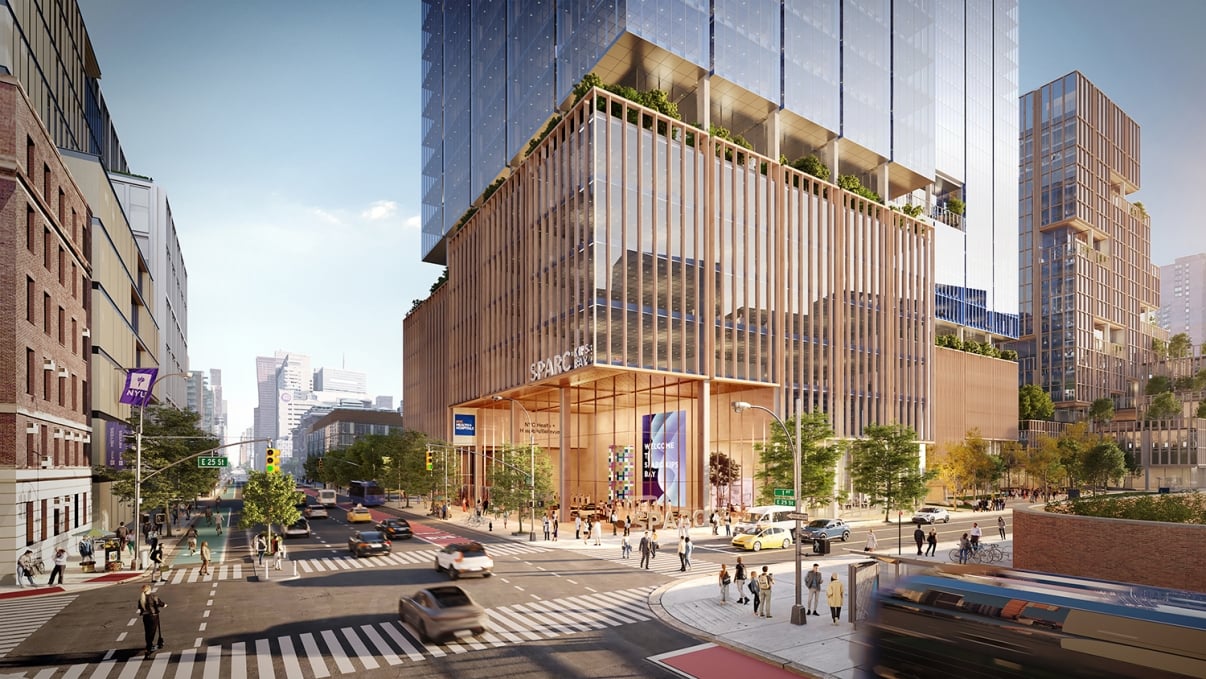
View of SPARC Kips Bay, looking northeast from First Avenue and 25th Street.
Credit: SOM/ Miysis
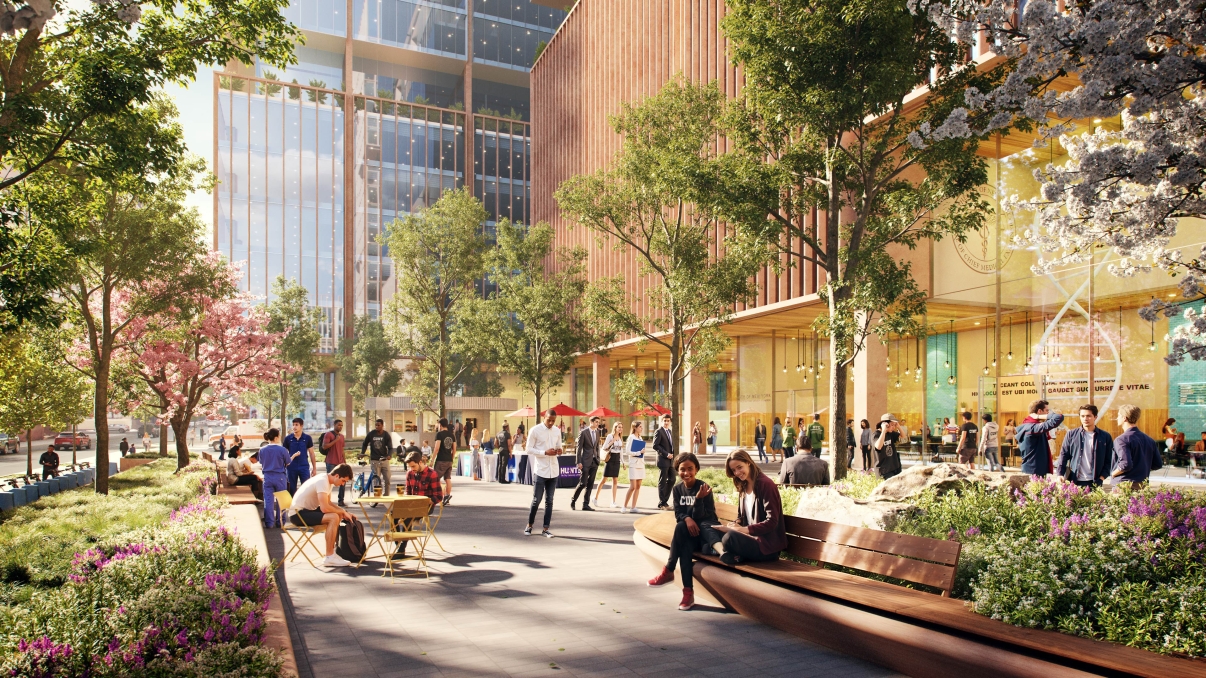
View from SPARC Square, looking west. Credit: SOM/Mysis
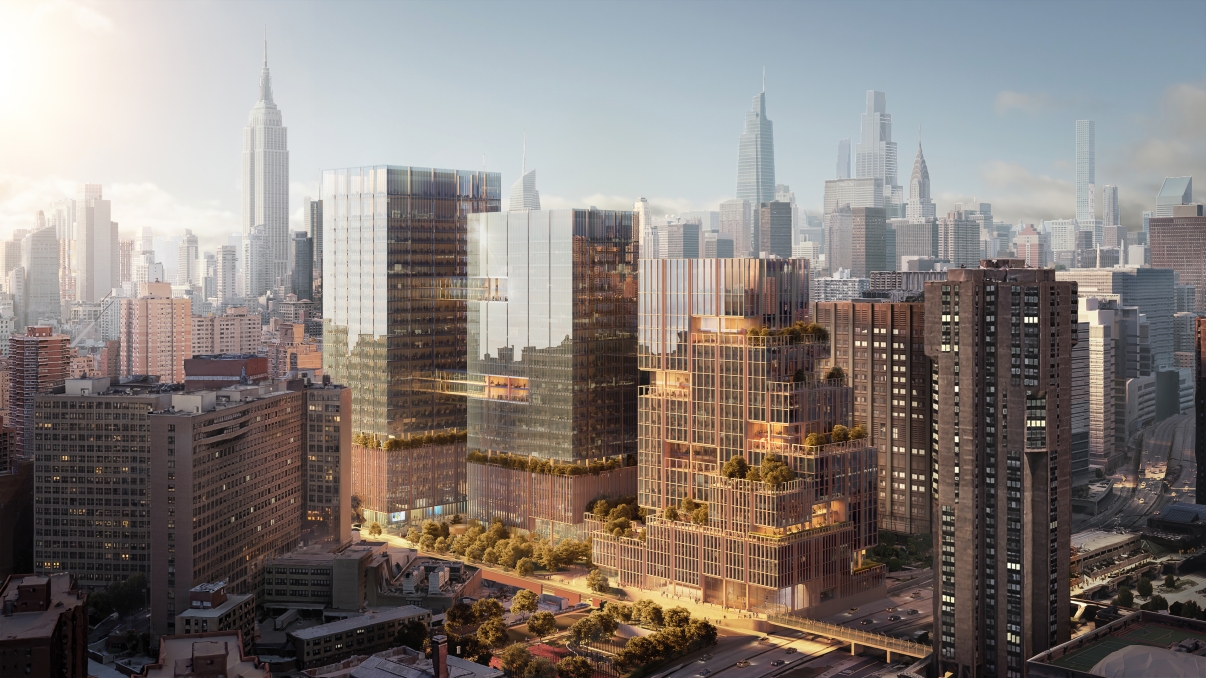
Aerial view of the SPARC campus within the Manhattan skyline. Credit: SOM/Mysis
The project will continue this legacy of successful public-private partnerships to help New York grow its life sciences industry, as supported by LifeSci NYC — a $1 billion initiative overseen by NYCEDC — to create 40,000 jobs over the next 10 to 15 years. Most recently, Mayor Adams and Governor Hochul announced alongside the Chan Zuckerberg Initiative (CZI) plans for the Chan Zuckerberg Biohub New York, a new biomedical research hub in New York City that will leverage a nearly $300 million public-private investment to drive collaboration between leading research institutions and solve significant scientific challenges.
SPARC Kips Bay Master Plan: The SPARC Kips Bay Master Plan outlines key new project details, including a new site plan and conceptual design of the transformation of this city block. Additional highlights of the SPARC Master Plan include:
Transforming the Hunter College Brookdale Campus into a more public and inviting campus with active ground floor spaces, neighborhood-serving retail, and public spaces for the community;
A unique model for education and job training that co-locates secondary and post-secondary education with industry and public health institutions to better connect New Yorkers to new career pathways through hands-on learning and training at all stages of their careers; and
Establishing a unified plan to implement the project that meets both the needs of the campus institutions and broader neighborhood.
Community Task Force: In addition to the master plan, NYCEDC launched the SPARC Kips Bay Community Task Force — co-chaired by New York City Councilmember Keith Powers and Manhattan Community Board 6 — to facilitate a substantive partnership with local stakeholders. The task force will convene on a regular basis and engage elected leaders, civic advocates, residents, and local community partners.
Workforce Development Task Force: NYCEDC and the Mayor’s Office of Talent and Workforce Development will also convene the SPARC Kips Bay Education, Training, and Workforce Development Task Force alongside CUNY, the New York City Department of Education (DOE), the New York City Office of Chief Medical Examiner (OCME), NYC Health + Hospitals (H+H), and citywide industry and workforce organizations to help shape the workforce opportunity at the future campus. The task force will inform new curriculum development to support the industries at SPARC Kips Bay and advance apprenticeships and other career-connected learning models to leverage the co-location of education and public and private industry.
First Phase of Design RFP: NYCEDC is releasing an RFP to procure a designer for the first phase of the project, including modern facilities for CUNY and DOE and long-overdue community infrastructure — notably one acre of new open space and improved public realm investment, neighborhood resiliency, and a new universally accessible pedestrian bridge at East 25th Street.
Tech Forward Life Sciences Center: NYCEDC is releasing a request for expressions of interest in Q1 2024 to solicit interest from academic, research, and newly formed consortia to establish a Tech Forward Life Sciences Center at SPARC Kips Bay.
SPARC Kips Bay will be anchored by new, modern facilities for students from the Hunter College School of Nursing and School of Health Professions, the CUNY Graduate School of Public Health and Health Policy, and the Borough of Manhattan Community College’s multiple health care programs. The hub will also feature:
An H+H/Bellevue ambulatory care center that will offer screenings, same-day procedures, diagnostics, and preventative care — reducing average wait times for patients by up to seven days;
A co-locating H+H Nursing Advanced Practice Center that will serve H+H employees systemwide and allow CUNY students and others to simulate real-life medical situations in an educational setting;
A DOE FutureReady NYC high school providing hands-on and career-connected learning in health care and sciences to prepare students for secondary education and careers in these growing sectors by leveraging partnerships with partner institutions;
A new OCME Forensic Pathology Center, which will be a nation-leading training facility for forensic pathologists, with a 24/7, year-round operational schedule; and
New life sciences office space, dry and wet labs, and translational research facilities that focus on growth trends in the industry like the use of machine learning for drug discovery.
“We are moving full speed ahead with SPARC Kips Bay, a first-of-its-kind hub for jobs, workforce training and education in New York State that will create thousands of employment opportunities for New Yorkers while also generating research and treatments with global benefits,” said Deputy Mayor of Housing, Economic Development, and Workforce Maria Torres-Springer. “I want to thank all of our partners for their commitment to this bold initiative and to the generations of scientists, students, entrepreneurs and public servants whose work at SPARC Kips Bay will help accelerate the growth of life sciences in our city while advancing the health of New Yorkers and people around the world.”
“Just over a year ago, we announced the vision for SPARC Kips Bay, a transformative project that will cement New York City as the global leader in the life sciences industry while building a more vibrant and inclusive economy,” said NYCEDC President and CEO Andrew Kimball. “With the release of the master plan, the formation of the SPARC Kips Bay Community Task Force and the Education, Training, and Workforce Development Task Force, and release of the design RFP, we are taking a major step forward in turning vision to reality by building a unique campus and ecosystem connecting DOE high school students as well as CUNY graduate and undergraduate students with the jobs of today and the future in the private sector life sciences industry and in key government health agencies. SPARC Kips Bay will not only generate enormous economic impact, create tens of thousands of jobs, update outdated city agency buildings, and create an industry pipeline for New Yorkers, but it will bring dramatic improvements to the public realm in Kips Bay.”
“The thoughtful and comprehensive SPARC Kips Bay Master Plan is an exciting step forward as we work to bring together three CUNY schools and programs into a single campus to advance research, education and practice in the life sciences, health care and public health sectors and expand the college-to-career pipeline for thousands of CUNY students,” said CUNY Chancellor Félix V. Matos Rodríguez.
“The New York City region leads the country in life sciences, and with projects like this, it’s easy to see why. SPARC is a long-term investment in education, jobs, health care, and public space — a big win that will reverberate for decades to come,” said New York City Department of City Planning Director and City Planning Commission Chair Dan Garodnick. “As our economy continues to evolve, it’s great to see the East Side of Manhattan become a center of global innovation. And with ‘City of Yes for Economic Opportunity,’ we’re going to help more of these important life science facilities open and expand in our city.”
“I am thrilled to see the city’s vision for career-connected learning and workforce development captured so perfectly in brick and mortar via the SPARC master plan released today,” said Mayor’s Office of Talent and Workforce Development Executive Director Abby Jo Sigal. “SPARC co-locates the full spectrum of public-private partners necessary to position New Yorkers for career success in health care and life sciences. I am excited by a future when a New York City public high school student can have a hands-on learning experience in a corporate life sciences lab and then decide to enroll in Hunter’s flagship nursing program, which includes gaining essential professional skills through on-the-job learning at a Health + Hospitals site. And that this all can happen without ever leaving the SPARC campus.”
“As a world leader in forensic pathology with roots in the neighborhood that extend over a century, we are excited to take this next step in the SPARC Kips Bay project under the leadership of Mayor Adams and Governor Hochul, in collaboration with many inspiring partners,” said New York City Chief Medical Examiner Dr. Jason Graham. “The emerging outline for SPARC Kips Bay promises to elevate our crucial operations in service of New Yorkers, while transforming the surrounding community with opportunities for young people to pursue careers in public health, health care, and the life sciences.”
“This bold project, spearheaded by Mayor Adams and Governor Hochul, showcases cross-agency cooperation and will transform an entire city block into a state-of-the-art hub for the life sciences industry,” said New York City School Construction Authority President and CEO Nina Kubota. “With a cutting-edge school within this life sciences and public health campus promises new and exciting opportunities for students venturing into careers within these thriving industries, the project will drive continued investment and economic activity for years to come.”
“The SPARC master plan represents an exciting step forward, propelling our city into a new era of innovation and opportunity,” said “New” New York Executive Director B.J. Jones. “With a vision for a dynamic ecosystem that integrates biotech companies, educational institutions, and healthcare facilities, the Adams Administration is building a bridge from education to real-world careers, empowering students and workers to thrive in the life sciences industry.”
SPARC Kips Bay is expected to enter into the city’s Uniform Land Use and Review Procedure in spring 2024, break ground in late 2025, and be completed by the end of 2031.
SPARC Kips Bay complements New York State’s $620 million Life Science Initiative, designed to spur the growth of a world-class life science research cluster in New York, as well as expand the state's ability to commercialize this research and grow the economy. This multifaceted initiative includes $320 million for strategic programs that attract new life science technologies to the state, promote critical public and private sector investment in emerging life science fields and create and expand life science-related businesses and employment throughout New York.
“With today's announcement of the Kips Bay Master Plan, we are another step closer to making this transformational jobs and education hub for the life sciences a reality,” said U.S. Representative Jerry Nadler. “I applaud the NYCEDC for their work to integrate the surrounding community in their proposal with the formation of a Community Taskforce that will engage with local leaders, advocates and residents to meet the needs of the neighborhood as this vision comes to life.”
“The Science Park and Research Campus (SPARC) project will not only be an asset for Kips Bay—it will position New York City as a leader in life sciences, providing 15,000 jobs and creating academic opportunities for New Yorkers,” said Manhattan Borough President Mark Levine. “I am excited to see SPARC enter a new phase with the release of this master plan and I look forward to further engagement with the community task force.”
“SPARC Kips Bay represents a transformational investment in making New York City the nation’s leading hub for life sciences and education,” said City Council Majority Leader Keith Powers. “The benefits, ranging from new public space to thousands of good paying jobs and world-class health facilities, will be felt by New Yorkers across the entire city. I am excited to work with community and state partners to help advance the project and break ground in 2025.”
“Manhattan Community Board 6 (CB6) is delighted to congratulate New York City Mayor Eric Adams, New York Governor Kathy Hochul, the New York City Economic Development Corporation (NYCEDC), and The City University of New York (CUNY) on the release of the SPARC Kips Bay Master Plan,” said Manhattan Community Board 6 Chair Kyle Athayde. “CB6 advocated for a mechanism for community input as the project progresses, so we welcome the creation of the SPARC Kips Bay Community Task Force and we look forward to leading the task force in partnership with Council Member Keith Powers. CB6 will continue to advocate for the community on the Task Force so that SPARC Kips Bay is a resource that our community can be proud of.”
“As New York continues to reinvigorate its economy, we must invest in development projects that will help New York City deepen its role as a leader in healthcare and life sciences infrastructure, creating thousands of family sustaining careers along the way,” said Gary LaBarbera, president, Building and Construction Trades Council of Greater New York. “The SPARC Kips Bay plan drives New York’s leadership in research and scientific advancement forward with a public health and education hub that will also pave accessible paths to the middle class for our hardworking people, including the union workers who will help build it from the ground up. We applaud Mayor Adams and Governor Hochul for their continued commitment to driving forward these initiatives that will further economic growth and improve the lives of all New Yorkers.”
“Focused, resourced, and sustained linkages between economic development in our city and state and high quality workforce training will always be the most essential drivers of job creation. The SPARC Kips Bay campus design and approach advances our shared desire to position NYC as a global leader in life sciences and health care - opening up new and dynamic education and employment opportunities for generations of New Yorkers - while enhancing and improving accessibility to our public spaces,” said Gregory J Morris, CEO, New York City Employment and Training Coalition. “We are enthusiastic about engaging in current and future efforts to build public and private industry partnerships as well as college and career connections at SPARC Kips Bay. Our collective success will help to ensure that we are meeting the public health challenges of the future while supporting inclusivity and diversity of opportunity in a high wage, high growth sector.”
“SOM is proud of our work with NYCEDC to devise a master plan that integrates a diverse range of education, health care, and research programs into a vertical campus seamlessly connected to adjacent open spaces and healthcare facilities” said SOM Principal Keith O'Connor. “Anchored on First Avenue, the fully resilient campus embraces the new SPARC Square and offers spectacular views of the East River. SPARC will welcome visitors, students and scientists with modern buildings, landscapes, and infrastructure that will support cutting-edge research for decades to come.”
About NYCEDC
New York City Economic Development Corporation is a mission-driven, nonprofit organization that works for a vibrant, inclusive, and globally competitive economy for all New Yorkers. We take a comprehensive approach, through four main strategies: strengthen confidence in NYC as a great place to do business; grow innovative sectors with a focus on equity; build neighborhoods as places to live, learn, work, and play; and deliver sustainable infrastructure for communities and the city's future economy. To learn more about what we do, visit us on Facebook, Twitter, LinkedIn, and Instagram.
